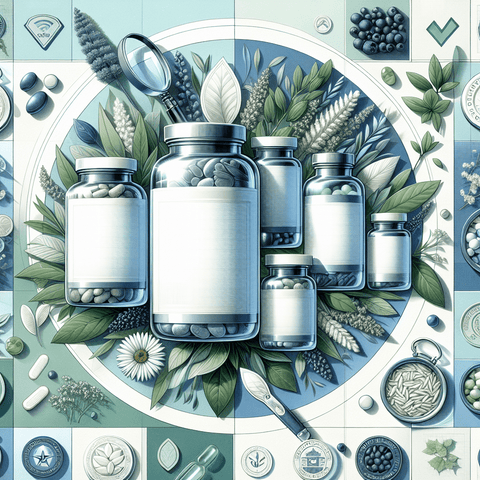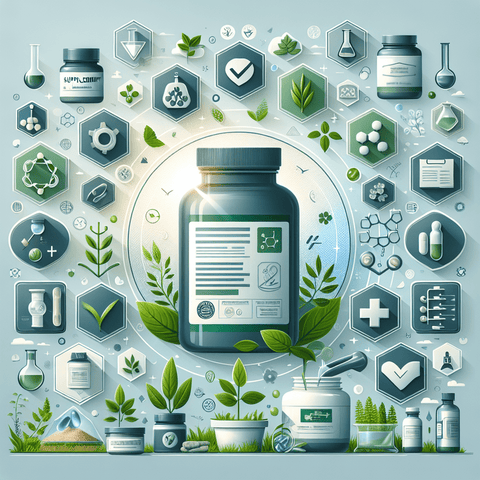In an era where health-conscious living is more prominent than ever, the popularity of nutritional supplements has soared dramatically. Consumers are increasingly turning to vitamins, minerals, and other dietary supplements to fill nutritional gaps, enhance overall wellness, or target specific health concerns. This surge in supplement consumption reflects a broader desire for proactive health management amidst busy lifestyles, declining diets, and a growing awareness of the role nutrition plays in well-being. However, as the industry expands rapidly, so do questions about the purity and quality of these products. Not all supplements are created equal, and not every product on the shelf maintains the rigorous standards necessary to ensure safety and efficacy.
Understanding supplement purity and quality standards is crucial for making informed choices. Consumers need to be equipped with the right knowledge to differentiate between high-quality, reliable products and those that could pose health risks or deliver subpar benefits. This article aims to offer comprehensive insights into what supplement purity entails, the standards that define quality, and practical tips to identify reputable products. Our goal is to empower you to select supplements that truly support your health without hidden contaminants or compromised ingredients, fostering trust in what you consume and optimizing your overall wellness journey.
I. The Vital Role of Supplement Purity in Nutritional Health
Supplements are meant to complement a healthy diet, providing essential nutrients that support bodily functions and overall health. But what exactly does "purity" mean in this context? Supplement purity refers to the absence of unwanted contaminants, adulterants, or impurities that can compromise safety and effectiveness. It signifies that the product contains the stated ingredients in the declared amounts without any harmful substances or undisclosed additives. Purity is fundamental because it directly impacts the supplement's safety profile and its capacity to deliver the promised health benefits.
When a supplement maintains high purity standards, consumers can trust that what is on the label matches what's inside, ensuring both efficacy and safety. Conversely, supplements with compromised purity may contain microbial contaminants, heavy metals, pesticides, or pharmaceutical residues—all of which can pose serious health risks. For example, microbial contamination might lead to infections, heavy metals such as lead or mercury can accumulate in the body leading to toxicity, and pesticide residues may introduce herbicides or insecticides that could disrupt normal bodily functions. Such issues undermine consumer trust and tarnish the reputation of the industry at large.
Certain misconceptions persist around supplement purity. Some believe that "all-natural" labels guarantee safety, but natural ingredients can still be contaminated during harvesting or processing. Others assume that mass-produced supplements are inherently unsafe; however, rigorous manufacturing standards can ensure safety regardless of scale. Awareness of the difference between genuine purity and misleading marketing claims is vital for consumers. It's important to scrutinize labels, look for credible certifications, and seek out transparent brands to avoid health risks.
Ultimately, supplement purity plays a critical role in safeguarding health, preventing adverse effects, and ensuring that the supplement performs as intended. A product free of contaminants not only supports better health outcomes but also reinforces trust in the supplement industry and promotes a culture of accountability and integrity within the marketplace.
II. Understanding Product Contamination: Hidden Dangers in Supplements
Product contamination remains one of the most significant challenges in the supplement industry. Despite growing consumer awareness, contaminated supplements still find their way into the market, often due to lapses during raw material sourcing, manufacturing, or packaging. Understanding the types of contamination and how they can occur is essential in discerning trustworthy products from those posing potential health hazards.
Types of contamination include microbial contamination, which involves bacteria, molds, or yeasts that can proliferate if hygiene standards falter during manufacturing. Heavy metals such as lead, arsenic, cadmium, and mercury are toxic elements that can contaminate raw ingredients, especially those sourced from polluted environments. Pesticides and herbicide residues may also be present in plant-based ingredients if not properly managed. Pharmaceutical contaminants, sometimes associated with adulteration to enhance potency, can introduce dangerous substances not disclosed on labels.
Contamination can occur at various stages. During raw material sourcing, contaminated plants or ingredients can introduce impurities. Manufacturing processes lacking proper quality controls, such as poor hygiene or inadequate filtration, can facilitate microbial growth or chemical contamination. Packaging materials, if not adequately sterilized or often reused, can also introduce microbes or chemical leachates into the product.
Historical cases highlight the risks involved. For instance, certain contaminated herbal supplements resulted in outbreaks of Hepatitis A, directly linked to contaminated ingredients. Heavy metal poisoning incidents have been traced back to poorly sourced multi-mineral products. Such examples emphasize the need for vigilance and strict quality controls.
Consumers can recognize signs of contaminated supplements by examining labels for certifications, batch numbers, and testing information. Unusual taste, color change, or odors should raise suspicion. However, since contaminants are often invisible, consulting brands that undergo third-party testing and verification provides greater assurance. Reputable companies are transparent about their sourcing, manufacturing practices, and testing results, making them safer choices.
To avoid contaminated products, it's crucial to prioritize supplements labeled with third-party testing seals from respected organizations. Educate yourself about markers of quality and avoid products without clear verification. Always buy from trusted vendors or specialty stores known for strict quality controls. Informed consumer vigilance is your best defense against hidden dangers lurking in supplements.
III. Ingredient Sourcing: The Foundation of Supplement Quality
The foundation of a high-quality supplement lies in transparent, ethical ingredient sourcing. When raw materials are sourced responsibly, it ensures the integrity and safety of the final product. Ingredient sourcing involves multiple considerations, such as geographic origin, cultivation or extraction methods, and supply chain traceability. These factors directly influence the supplement’s potency, safety, and environmental impact.
Poorly sourced ingredients often suffer from adulteration, low potency, or contamination. For example, herbs harvested from polluted environments may carry heavy metals or pesticide residues. Synthetic ingredients produced with little regulation or oversight might lack purity or consistency. Such issues undermine a product’s efficacy and pose health risks. Conversely, ingredients from certified organic farms or those verified through DNA testing provide greater assurances of purity and authenticity.
Sourcing practices also impact sustainability and ethical standards. Brands that prioritize eco-friendly practices, fair labor, and sustainable harvesting contribute to environmental preservation and social responsibility. Geographic origin matters too; ingredients from regions with stringent agricultural regulations tend to be safer and more reliable than those from areas plagued with lax standards or illegal harvesting activities.
Selecting brands that emphasize supply chain traceability enables consumers to verify where ingredients originate and how they are processed. For example, certain herbal ingredients like ginseng or turmeric should be sourced from reputable regions known for quality control, such as controlled cultivation zones in Asia or organic farms in Europe. Manufacturers that openly share supply chain details and undergo third-party verification demonstrate a commitment to quality and transparency.
When choosing a supplement, look for labels or company statements indicating careful sourcing practices. Products that specify organic, non-GMO, or sustainably cultivated ingredients are preferable. Being vigilant about ingredient origins helps ensure that the supplement you choose is safe, effective, and responsibly produced. To explore options with transparent sourcing and verified quality, visit trusted sources like Vitamin C supplements, or Vitamin D products.
IV. Third-Party Testing: Verifying Supplement Integrity
Third-party testing has become an essential component in verifying the safety, potency, and quality of dietary supplements. Unlike manufacturer labels, which can sometimes be insufficient or misleading, independent laboratory testing provides objective confirmation of a product’s contents. This verification process involves rigorous analysis of raw materials, finished products, and batch samples to ensure compliance with label claims and safety standards.
Several reputable organizations offer third-party testing and certification, including NSF International, USP (United States Pharmacopeia), and Informed-Choice. These organizations evaluate supplements based on criteria such as ingredient verification, contaminant testing, and manufacturing process audits. Their seals and labels serve as a mark of trust, indicating that the product has undergone independent scrutiny and meets rigorous standards.
Benefits of third-party verified supplements include enhanced consumer confidence, assurance of ingredient accuracy, and confirmation that contaminants like heavy metals or microbial agents are within safe limits. These verifications also help prevent adulteration or false claims, making them an excellent resource for discerning quality from lower-standard products.
Interpreting third-party testing results involves understanding certification seals and reviewing batch-specific reports if available. Many reputable brands include QR codes on labels linking to detailed testing results, providing transparency. Regular batch verification ensures ongoing quality consistency, especially for products stored over time or produced in large quantities.
When selecting supplements, prioritize those with third-party seals and transparent documentation. This practice underscores a manufacturer’s commitment to quality and helps consumers avoid the risks associated with contaminated or misleading products. For a variety of vetted supplement options, explore trusted vendors that practice strict quality controls on [Vitamin K](https://www.topvitamine.com/collections/vitamin-k-benefits-bone-blood-health), [Magnesium](https://www.topvitamine.com/collections/magnesium-benefits-energy-muscle-bone-support), and essential fatty acids like [DHA and EPA](https://www.topvitamine.com/collections/dha-epa-omega-3-supplements).
V. Manufacturing Transparency: Knowing What's Inside Your Supplements
Manufacturing transparency refers to the openness of supplement brands regarding their production processes, sourcing, testing, and quality control measures. Transparency fosters consumer trust, enabling buyers to make confident choices based on accurate information about what they are ingesting.
Brands that prioritize transparency typically provide detailed product labels, clear ingredient lists, and comprehensive reports on their sourcing and manufacturing practices. They may also share information about their HACCP (Hazard Analysis and Critical Control Points) protocols, GMP (Good Manufacturing Practices) compliance, and third-party testing results. When evaluating a supplement company, ask questions about their quality control measures and whether they conduct regular batch testing.
Transparent manufacturers usually undergo audits and certifications that demonstrate their commitment to quality. Comparing manufacturers based on their transparency policies helps consumers identify brands that are more likely to produce safe, effective, and trustworthy products. For example, companies that openly disclose their supply chain, manufacturing standards, and testing procedures demonstrate higher integrity and a dedication to consumer safety.
Case studies further exemplify this difference. Some companies have faced recalls or safety issues due to opaque processes and lack of oversight. Others have built their reputation through openly sharing lab results and sourcing information, thus maintaining consumer confidence. Choosing brands with transparent manufacturing practices means you are more likely to receive products that meet high standards and are free from contaminants.
Practicing due diligence by reviewing transparency reports, certifications, and company websites ensures your supplement choices are rooted in safety and accountability. For a broad range of options with transparent manufacturing standards, visit trusted sources that highlight their manufacturing integrity, such as those offering verified [Vitamin D](https://www.topvitamine.com/collections/vitamin-d-benefits-sources-safety) products or [Magnesium](https://www.topvitamine.com/collections/magnesium-benefits-energy-muscle-bone-support).
VI. Quality Assurance: Ensuring Supplements Meet High Standards
Quality assurance (QA) in supplement production encompasses all systematic activities aimed at guaranteeing that products meet predefined quality criteria. From raw material sourcing to final packaging, QA processes involve strict controls, documentation, and testing procedures designed to prevent contamination, ensure nutrient stability, and verify label accuracy.
Quality control measures include supplier qualification, in-process testing, microbial assessments, heavy metal analysis, and stability testing. Each step aims to detect potential issues early, thereby preventing substandard or unsafe products from reaching consumers. Implementing quality assurance not only promotes consumer safety but also enhances a brand’s credibility and market reputation.
For consumers, verifying a brand’s QA processes involves seeking out companies that adhere to recognized standards such as GMP compliance, ISO certifications, and audit reports from third-party testing organizations. Many reputable brands include detailed QA information on their websites or product labels, demonstrating their commitment to excellence. Certifications like NSF, USP, or Informed-Choice further support claims of high-quality manufacturing.
The benefits of robust QA systems are evident: consistent product potency, minimized risk of contamination, and reliable performance. To ensure your supplements meet these high standards, opt for products from brands dedicated to quality offer testing certificates and transparent manufacturing practices. These measures safeguard your health and allow you to confidently incorporate supplements into your health regimen.
Conclusion
The supplement industry presents a vast array of products, making it crucial for consumers to be vigilant and well-informed. Key factors such as supplement purity, contamination risks, ingredient sourcing, third-party testing, manufacturing transparency, and quality assurance form the bedrock of trustworthy supplementation. By understanding these elements, consumers can differentiate between high-quality, safe products and those that may compromise health or waste resources.
Prioritize brands that demonstrate transparency, undergo third-party testing, and sourcing ingredients responsibly. Regularly review labels, certifications, and testing results to validate product claims. In doing so, you not only protect your health but also support industry practices that emphasize accountability and integrity. Remember, making informed choices about supplements is a vital step toward maintaining optimal health and wellness in today’s complex and rapidly evolving market.
Call to Action
Take a moment to review your current supplement collection. Are your products verified by third-party testing? Do they come from transparent, reputable sources? If you're interested in investing in premium, thoroughly vetted supplements, explore the curated selection at Topvitamine.com. Prioritize your health today by choosing supplements that meet the highest standards of purity and quality, ensuring your wellness journey is both safe and effective.
Q&A Section
Q1: Why is supplement purity important for my health?
Supplement purity ensures that products contain only the ingredients listed, free from harmful contaminants like heavy metals, microbes, or pesticides. Consuming pure supplements reduces health risks, enhances efficacy, and provides confidence that you're supporting your well-being with safe products.
Q2: How can I identify contaminated supplements?
Look for third-party testing seals, transparent labeling, and batch-specific testing results. Avoid products with vague ingredient lists, missing certifications, or any signs of spoilage. Consulting reputable brands and specialist vendors further reduces the risk of contamination.
Q3: What role does ingredient sourcing play in supplement quality?
Proper sourcing ensures raw materials are free from pollutants and adulteration. Ingredients from responsibly managed farms or certified suppliers guarantee better safety, potency, and sustainability, greatly impacting the overall quality of the supplement.
Q4: Why is third-party testing crucial?
Third-party testing provides independent verification that a supplement contains what it claims and is free from harmful substances. It acts as an unbiased quality check beyond manufacturer claims, thereby safeguarding consumer health.
Q5: How does manufacturing transparency benefit me as a consumer?
Transparency reveals the processes behind product creation, including sourcing, testing, and quality controls. This information helps consumers choose brands committed to safety, accountability, and high-quality standards, reducing the chance of encountering substandard products.
Important Keywords
- Supplement purity
- Quality standards
- Third-party testing
- Ingredient sourcing
- Manufacturing transparency
- Contamination risks
- Heavy metals
- Certifications
- GMP compliance
- Supplement safety
- Trusted supplement brands



